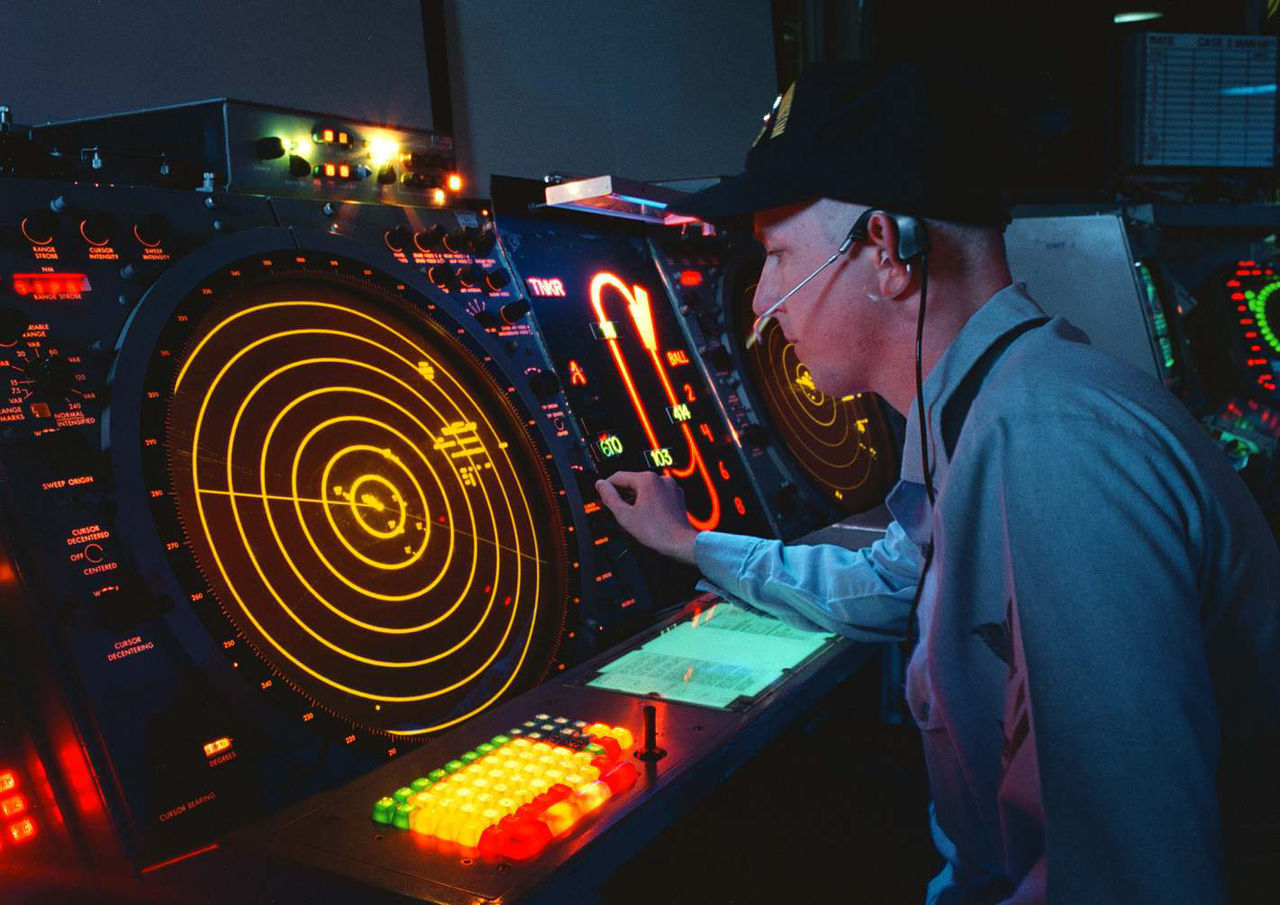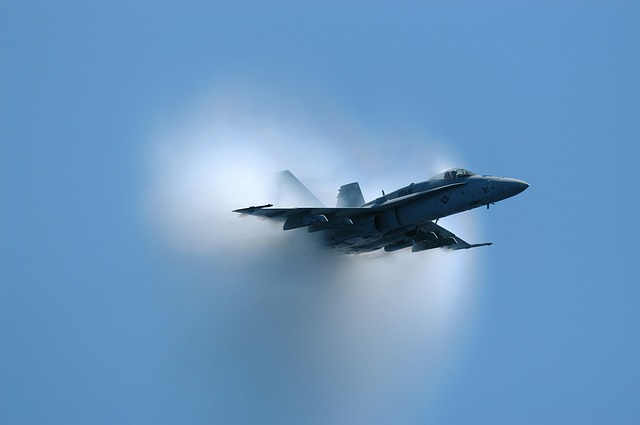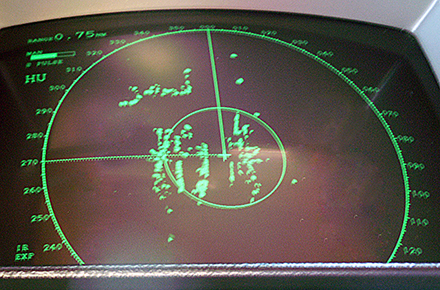Airborne radars: The role of the Doppler effect in aviation
In air traffic control towers, radars display the current position of airplanes on their screens. Additionally, the Doppler effect allows the speed to be shown, thus enabling stationary objects such as buildings or hills to be filtered out and not shown on screens (elimination of clutter).
In the case of surveillance radars, waves with lengths in the centimetre range are sent out for a microsecond each, a thousand times a second. How far do radio waves travel in a thousandth of a second? 300.000 km in one second, and therefore 300 km in a thousandth of a second.
If an echo of 1000 impulses per second is used, detected objects need to be less than 150km away: the radio waves have to make a return trip, and there is just about time to do this within a thousandth of a second.
The Doppler VOR principle
The Doppler VHF Omnidirectional Radio Range is a particularly accurate piece of navigational equipment for aviation. It can be compared to a shipping lighthouse.
A lighthouse emits a beam that rotates at a specific speed (frequency) and emits an extra flash when the beam is pointing north. A lighthouse can be identified by its particular frequency. By measuring the time between the signal for north and when a lighthouse beam is pointing at a ship, that ship can determine the bearing of the lighthouse in relation to the ship. The distance to the lighthouse can be estimated using the brightness of its beam, and using this together with the information on the direction in which the ship is moving, the ship’s course can be worked out.
A Doppler VHF Omnidirectional Radio Range emits a rotating directional radio wave at 100 MHz and a 360 degree signal as it passes north. This allows an aircraft to correctly determine the exact bearing of the ground station.
The aircraft also sends out a signal that is received and answered by the ground station. The time taken until the echo is received allows the distance of the ground station to be determined, and the shift in frequency allows the speed to be estimated (called the DME – Distance Measuring Equipment – procedure). In this way, the system provides all the important data necessary for navigating an aircraft.
Super-sonic speed: An extreme Doppler effect
Doppler’s student Ernst Mach focussed on flight at super-sonic speed (340m/s = 1 Mach, around 1200 km/h):

When an aircraft accelerates, it compresses the sound waves it emits in the direction of its movement. When it reaches super-sonic speed, it breaks the sound barrier and creates a “sonic boom carpet” which is named after Ernst Mach – the Mach wave.
The sound waves emitted by the aircraft add up together to form a sound barrier – a strong pressure wave. At Mach 1, the aircraft “breaks the sound barrier” and a loud boom is audible for kilometres all around.
If an aircraft is travelling at higher than Mach 1, i.e. at super-sonic speed, the aircraft can only be heard when it has already passed by. A bullet also flies faster than sound (500 – 800 m/s).
Commercial aircraft fly at about 0,8 Mach, whereas military aircraft fly at 2 or 3 Mach.




